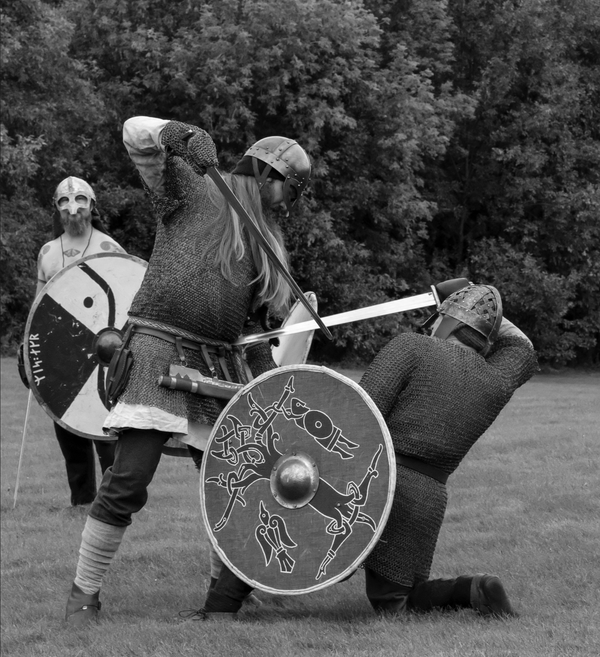How did I get here? Confessions of an itinerant art person
by Kate Mothes
It is said that necessity is the mother of invention. Normally we think of this in terms of a new product or method of doing something can make life easier or more enjoyable. Then there’s the way we innovate as individuals, and how we use the tools and resources at our disposal to beat a new path and fulfill a need. My need was art. Rather than making it myself, I wanted to be with it, to be surrounded by the ideas that spark it and the people who make it. My need was the art community. And because I wasn’t sure where or who that was, I went to look for it.
I’m an independent contemporary art curator and founder of Young Space (yngspc.com / @yngspc), a nomadic online-offline platform emphasizing early-career and emerging contemporary artists. I started Young Space as a blog in 2014 to channel my thoughts about art I was seeing while I was pursuing a Masters degree in the history of art, in Scotland. I’m from Wisconsin, by the way, and I’m still based in the Fox Cities about 1⁄3 of the year. The rest of the time I travel around the US and Europe, collaborating on art exhibitions and other projects. Mostly, I like to describe myself as a facilitator. I like to bring people and ideas together around art.
Young Space has become one of the biggest independent online contemporary art platforms today. It filled a niche at a time when the art world and art market was becoming interested in emerging artists in a way it never had been before, and it has become a go-to for gallerists, curators, and other artists around the world to learn about what’s new.
What I do has been described as unconventional, experimental, even part of a “new wave.” It’s sort of like talent-spotting for artists who are early in their careers or just starting to break into the art world. Utilizing the internet—namely social media—as a connector and community builder in the art world, I curate contemporary art exhibitions, meaning I work with numerous artists, gallerists and art dealers to organize exhibitions for galleries and museums, both online and off. Arguably it’s a bit ironic that I’m writing this for a newspaper called fuck social media as it’s not an exaggeration to say that what I do would not be possible without social media!
Contemporary art had never been a part of my art history education, so while I could research and write about things from the far past, contemporary art—generally defined as art being made now or very recently—felt like looking through a glass wall. Most of it seemed totally incomprehensible to me. I could see it, but I couldn’t really reach it. Why do the lofty white cubes of contemporary galleries feel like such intimidating places, staffed with people who never smile or greet you? What if an artist hears you talking about their work and you get it wrong? What if you just don’t get it?? Contemporary art just made me feel stupid. I was terrified to talk about it. It felt safer to stick to big old museums with absent curators and lots of things made by dead people who wouldn’t hear me say dumb stuff about it. I had no idea about the art world, let alone what community or neighborhood within it really felt like the place I belonged.
After graduating, I moved back home to Wisconsin and started an account for Young Space on Instagram so that I could keep my finger on the pulse and share more art that I liked. To my surprise, it began to resonate with others. Artists wanted to have their work shown on Young Space. Then I organized a couple of pop-up exhibitions. The first one was in Appleton, in a formerly empty space on College Avenue. That show established a framework for how I’ve organized all exhibitions since. The next summer, I put out an open call online for a group show in Hortonville, WI, at Standard Projects, which at the time was hosting exhibitions regularly. I was blown away by the response—people from all over the world wanted to show their work in a tiny village in Northeast Wisconsin that they couldn’t even get to!? DANG! It was crazy. Being able to share the work online was crucial.
I’m a firm believer that ideas choose us, not the other way around. Whether it’s through publications, exhibitions, an online platform, or coordinating a project like an artist residency or a panel discussion, it’s an unbelievably fortunate thing to be able to reflect on the fact that I figured this out, step by step, on my own and exactly how I want to do it. The privilege of being able to travel so much and work on such a variety of projects isn’t lost on me either. It feels a lot like playing an endless game of Tetris to make sure that projects come off without a hitch, that I can get to where I need to be, and that my collaborators feel supported. In a sense, I’m always working, and figuring out ways to improve upon what I’ve already done.
Six years ago, I was terrified to talk to a living artist about their work. Now I talk to artists about their work every single day. The key was approaching it in a way that made sense to me. I tried not to worry too much about what others might think, because frankly, art is as much—if not more—about the dialogue that happens between the viewer and the work as it is about the artist’s intention in making it. That’s the true power of art in the first place: to communicate meaning. Yes, some background information can be helpful, but sometimes something just speaks to you, and that’s not something that can be studied.
All in all, the biggest lesson I’ve learned is the value of a community that welcomes ingenuity, experimentation, collaboration, and open dialogue. This community can be local or it could be scattered to the ends of the earth, connected by something like Instagram. Every day I learn new things, new ways of talking about and encouraging artistic practices. In hindsight, I realized that what I was missing was a sense of ownership, a confidence in my own voice, and the feeling of having something to contribute. But then there’s another adage that always pops to mind, seemingly gaining strength all the time: Rules are there to be broken. It’s all just a matter of finding the right art world neighborhood and feeling empowered within it. Oh, and lots and lots of trial and error!
Kate Mothes is a contemporary art curator and founder of Young Space (yngspc.com / @yngspc) and co-founder/editor of Dovetail Magazine (@dovetail.mag), a contemporary art periodical releasing its inaugural issue in Summer 2020. She earned a Bachelors in Art History from the University of Wisconsin-Madison, and a Masters in Art History from Edinburgh College of Art at the University of Edinburgh. She is based part-time in Wisconsin and the rest of the time wherever the art winds blow. More information about her past projects can be found at katemothes.net.




